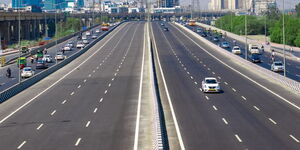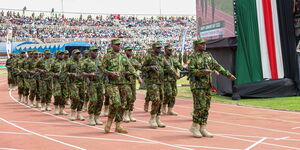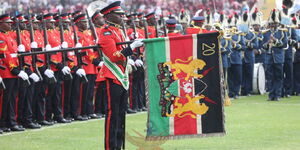A recent photo of a truck ferrying steel billets got Kenyans online debating as to why the truck was loaded with a few bars and their use.
In the photo, the truck was pictured transporting rectangular-shaped steel bars while in transit.
Urbanas Muasya, a Facebook user wondered what was being transported.
“What is the purpose of these steel rods carried by this truck? What do they produce and why wouldn’t the driver fill the lorry with them instead? Are they heavy as steel coils?”
In answering him, Charles Kariuki revealed: "They are called "billets"...about a tonne in weight per piece and are preheated together with other ingredients in extremely high temperatures, to produce metal bars like angel line, channel, square tubes, and round tube,”
Kenyans.co.ke sought to understand what these steel billets are and their purpose.
Billets are simply pieces of metal that have been cut into a specific shape and size.
They are often used in manufacturing and can be found on trucks and other vehicles.
Billets vary in cross-section size from 120 mm2 to 140 mm2, and in length from 9 m to 11 m. The target weight ranges from 1.1 to 1.6 tons.
They are significantly used in the construction of buildings. But according to their shapes and size, they can be used in military weapons and building vehicles.
Equally, they are known for their flexibility and malleability, mainly when presented to differing temperatures during forming, shaping, and moulding.
To produce a billet either continuous casting or hot rolling produces them. In continuous casting, molten metal is poured into a mold where it solidifies into a semi-finished billet shape.
The billet is then reheated and passed through a series of rollers that gradually reduce its cross-section to the desired size. Hot rolling is similar, but the billet is first heated to a temperature above its recrystallization point before being passed through the rollers.
Billets can be made from virtually any type of metal or alloy, although aluminium, steel, and magnesium are the most common.
In its pure form, steel is not usable, so it must be cast into shapes that will be used to create products.
Moreover, they are typically round or square in cross-section and can be up to several feet long.
Steel billets are as well used in expulsion, fashioning, rolling, and other metal-processing operations as a raw material or feedstock.
Also, bars, poles, and places with precise shapes are made with this material.
Engineering and machining parts and components are frequently produced in forges or machine shops. Fasteners, turned components, milled components, machined components, precision components, and parts, among other items, are all suitable.
Steel billets are broadly utilized in development construction, electrical, gadgets, car, waterworks, aviation, producing, transport, clinical, nourishment and a lot progressively modern areas.












